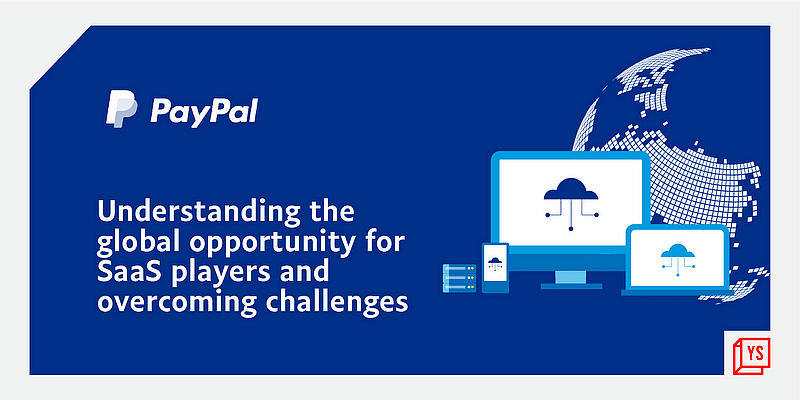The Indian Software-as-a-Service (SaaS) industry, which is overwhelmingly dominated by startups, has made tremendous progress in recent years. SaaS companies in India collectively generate about $2-3 billion in annual revenue, according to a study by SaaSBOOMi in association with McKinsey.
While a strong focus on digital marketing efforts have helped Indian companies in enabling access to customers and end markets, an increase in the demand for digital payments is starting to pose a series of problems for SaaS companies.
PayPal in association with YS is conducting a series of virtual sessions to build deeper connections across specific segments. In the first session, industry leaders and experts – Vara Kumar Namburu, Co-founder, CPTO of Whatfix; Vijay Yalamanchili, CEO of Keka; Sreevathsa Prabhakar, Founder and CEO of Servify; Himanshu Doshi, CPO of Servify; Dhruvil Sanghvi, CEO of LogiNext; and Navin Mistry, Director, Cross Border Payments, PayPal India – shared their insights on the challenges Indian SaaS companies faced while scaling global heights.
Challenges of scaling a SaaS business
Creating a product or service and marketing it without exactly understanding market needs or solving an existing problem, leads to a downfall for most SaaS companies. But, for those that do manage to identify the problem and innovate solutions, scalability is sometimes a long-drawn and arduous process.
“We manage the whole SaaS platform along with giving the platform for free, and we also get requests from some of our large OEM partners who say they have a better relationship with a different payment provider; so why not integrate that. We then have to integrate the whole world of payment gateway and payment partners. Scaling and offering a consistent product journey are major challenges for us,” said Sevify’s Sreevathsa.
Himanshu agreed and added that working with many providers means the level of service differs from provider to provider. And that raises the challenges when companies go from country to country, struggling to provide seamless services.
“The finance teams in most large or mid-market companies across the world are not comfortable wiring money into an Indian bank account. Having a partner like PayPal makes it easier to build trust with customers,” shared LogiNext’s Dhruvil.
Currency conversions also seem to pose a problem. US Dollar payments are seen as comfortable globally. Raising an invoice in INR is difficult as most companies become queasy in dealing with INR. Vara concurred with the other panelists and said that making global payments easy is extremely important, especially for Indian companies.
The fast-paced growth of SaaS companies makes scaling payments a hindrance to the growth rate. Customer demands are subject to change, depending on their growth rate and change in requirements.
Distinction between B2B and B2C landscape
Understanding a market is the first step towards trying to identify the problem and then introduce a solution. Vijay said that the approach for targeting a B2C segment has to be completely different. He added that identifying targets is most important, whether it is B2B or B2C.
“If you size the demand into vertical software and horizontal software, vertical software is B2C. So financial service to the end user, education to the end user, retail to the end user, are all B2C. Client and marketing softwares, infrastructure or human resource softwares, are all B2B,” said Navin.
Local and global opportunities for SaaS players
Widening the market and expanding beyond the initial boundaries will give SaaS companies an edge to grow ahead of the competition.
Vara shared how there are a lot of local expectations to fulfil when companies take their business to the global market. “In English speaking countries, products can be designed in one way. When we support non-English speaking countries, the language is a bigger issue. So we need to be able to support things which are local to their language. Given the differences in terms of local culture and local taxation, some SaaS companies have to operate very differently,” he said.
Customers do not seem to be comfortable hearing a quote in another currency. SaaS companies are already offering invoices to clients in their local currency. And organisations need to be ready to take the conversion hit. More than payments and currency, building a good market team to target companies in different corners of the world and thinking about whether the sales team should be in India or hired locally, are factors that will decide the growth of Indian SaaS companies going global.










